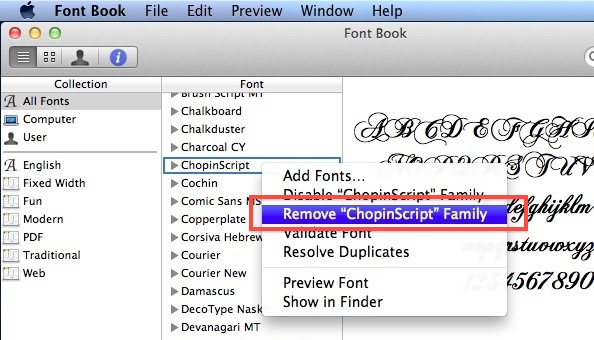Download Fonts To Mac
Fonts that come with your Mac can liven up your e-mail, word processing, presentation, and spreadsheet documents. A sans serif font, such as Helvetica or Arial, makes headings easy to read. Serif fonts, such as Times or Garamond, are easy on the eyes when reading long passages of text. The family and style of the typeface you use in your documents can set the tone as professional, friendly, or downright fun.

While your Mac comes with a slew of fonts, there are many others are available on the Internet. Here are the steps for finding, downloading, and installing them to your Mac.
Click the Safari icon on the Dock or Launchpad.
In the Search and Address field, type copyright-free fonts.
If you use only copyright-free fonts, you can use them for both personal and business purposes without worrying about legal consequences. Many copyrighted fonts can be licensed; respect the usage rights should you choose to use them.
Click one of the search results that interest you.
Click Download.
The fonts are downloaded to a folder in your Downloads folder.
Click the Downloads folder on the Dock, and then click the Open in Finder button to have a window to work in.
Choose File→New Finder Window.
Choose Go→Go to Folder and type Library.
Power iso dmg. The Library folder opens in the second Finder window.
Shift-click or Command-click to select all the fonts in the Downloads file (in the first Finder window) and drag them to the Fonts folder in the Library folder (in the second Finder window).
The new fonts will be available in any apps that offer font support, such as e-mail or word processing.
Some of the apps that come pre-loaded on your Mac are grouped into collections, which are groups of similar fonts, such as Chinese, Classic, and Fun. If you download related fonts, you might like to group them in a collection, such as Christmas fonts. To do that, you work with the Font Book, as follows:
Want to brighten up your Mac documents? Or maybe you need new fonts for your current project? Don't just stick with what you have - here's how to install brand new fonts on a Mac in a few. If you want fonts to be available to anyone who uses your computer, drag them to the Library/Fonts folder. This Library folder is located on your Mac’s startup drive; simply double-click the startup drive icon on your desktop and you can access the Library folder. Once inside the Library folder, drag your new fonts to the Fonts folder.
Click Launchpad on the Dock, and then click the Other folder.
Click the Font Book icon.
The Font Book opens.
Click the Add button (+) at the bottom left under the Collection column.
An Unnamed Collection appears in the list of Collections.
Type a descriptive name for the collection.
Click All Fonts at the top of the Collection list.
Scroll through the fonts in the fonts list and Command-click to select those you want to put in the newly created collection.
Lift your finger from the Command key to scroll, and then replace it to Command-click another font; your previous selections remain.
The selected fonts appear in the pane on the right. Drag the slider or use the pop-up menu to change the size of the sample font.
Drag the selected fonts to the collection you created before.
Click the collection name.
The fonts you placed there are listed. They still exist in the All Fonts list but are easier to find when you use the Font Book (sometimes called the Font Inspector) within different apps.
Click the buttons above the Collection column to preview the fonts by Sample (shows the alphabet), Repertoire (shows symbols and punctuation in addition to the alphabet), Custom (lets you type a sample paragraph and see how it looks), and Font Info (describes the font name, kind, and other information about the font, including the all-important copyright information).
- Using MacType or GDIPP you can get Mac like smooth fonts on Windows 10 PC. If you are a using both macOS & Windows, you might have observed that the font in the Mac looks nicer and smoother than.
- How to download fonts on Mac and then how to use downloaded fonts on Mac after that? First of all, whether you’ve bought or found a typeface on the web, make sure to locate the file you can download. There are a variety of font formats, and some of them are incompatible with Macs.
Install fonts
Double-click the font in the Finder, then click Install Font in the font preview window that opens. After your Mac validates the font and opens the Font Book app, the font is installed and available for use.
You can use Font Book preferences to set the default install location, which determines whether the fonts you add are available to other user accounts on your Mac.
Fonts that appear dimmed in Font Book are either disabled ('Off'), or are additional fonts available for download from Apple. To download the font, select it and choose Edit > Download.
Disable fonts
You can disable any font that isn't required by your Mac. Select the font in Font Book, then choose Edit > Disable. The font remains installed, but no longer appears in the font menus of your apps. Fonts that are disabled show ”Off” next to the font name in Font Book.
Remove fonts
You can remove any font that isn't required by your Mac. Select the font in Font Book, then choose File > Remove. Font Book moves the font to the Trash.
Learn more
macOS supports TrueType (.ttf), Variable TrueType (.ttf), TrueType Collection (.ttc), OpenType (.otf), and OpenType Collection (.ttc) fonts. macOS Mojave adds support for OpenType-SVG fonts.
Download Font To Illustrator Mac
Legacy suitcase TrueType fonts and PostScript Type 1 LWFN fonts might work but aren't recommended.